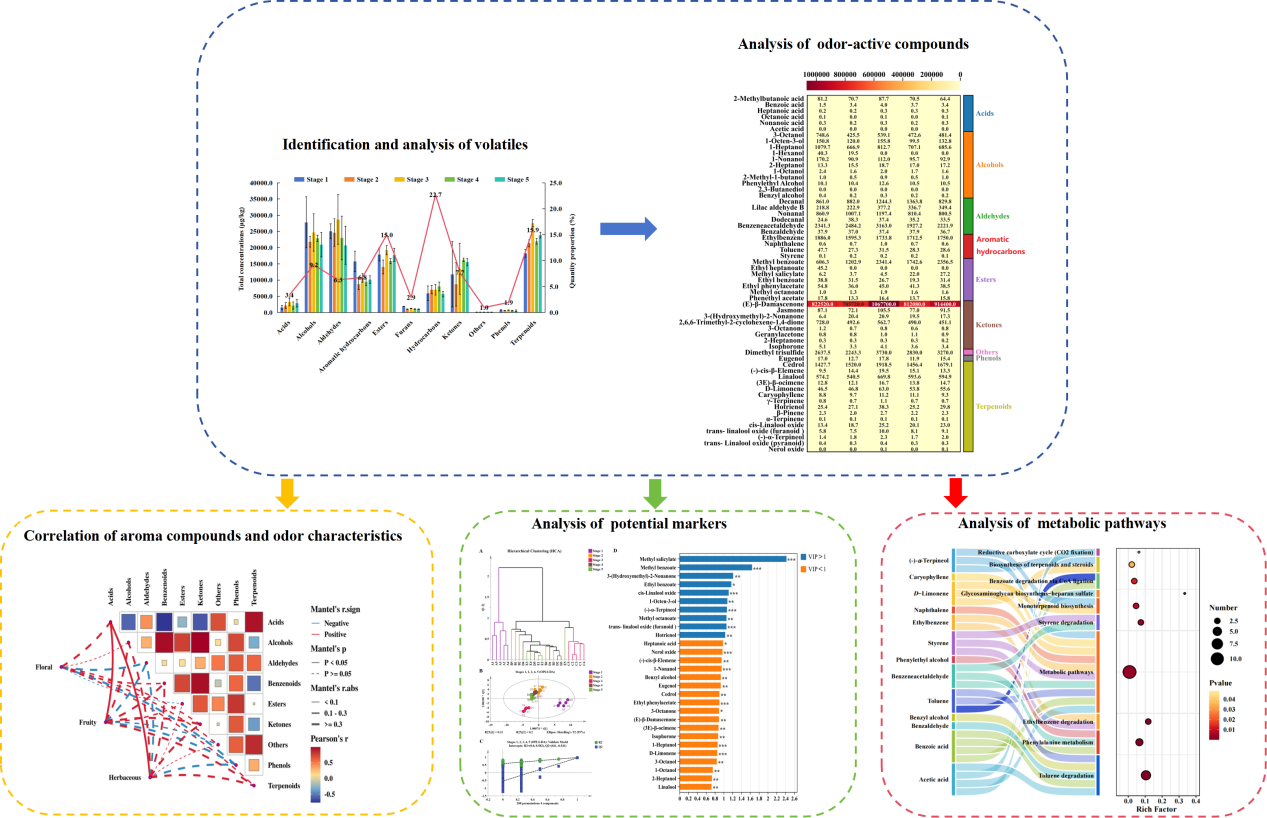A study revealing the dynamic variation in the aroma characteristics of Rhus chinensis honey at different stages after capping
Date:2024-04-29
Recently, the Resource Insect Products Processing and Functional Evaluation Innovation Team from the Institute of Apicultural Research, Chinese Academy of Agricultural Sciences (CAAS) found the dynamic variation in the aroma characteristics of Rhus chinensis honey at different stages after capping. The related finding has been published in Food Chemistry.
After converting nectar into honey in the hive, bees secrete beeswax to seal the honey-filled nest, a process also known as honey ripening.The physicochemical properties of honey changed significantly during the ripening process. However, it is not clear whether the aroma characteristics of honey change at different times after capping.
In this study,192 volatiles with varying levels of concentration were identified at different stages of Rhus chinensis honeys after capping.“Fruity” was the main aroma characteristic of RCHs at different stages after capping, mainly contributed by (E)-β-damascenone. Methyl salicylate might be potential indicators for differentiating RCHs at different stages after capping. The metabolic pathway analyses revealed that the aroma compounds in RCHs undergo transformation at different stages after capping, which subsequently affects its aroma characteristics formation. This study is the first to study the dynamic changes in honey aroma characteristics after capping from multiple perspectives, and the results are of great significance for understanding the aroma characteristics after capping and quality control of honey.
The work was supported by National Key Research and Development Program of China (2022YFD1600200), National Natural Science Foundation of China (No. 32272402 and 31772070), National Project of Risk Assessment for the Quality and Safety of Bee products, PRC(GJFP20220305), Apicultural Industry Technology System Construction of Modern Agriculture (CARS-44-KXJ8).
Link to this paper:https://doi.org/10.1016/j.foodchem.2024.139226
